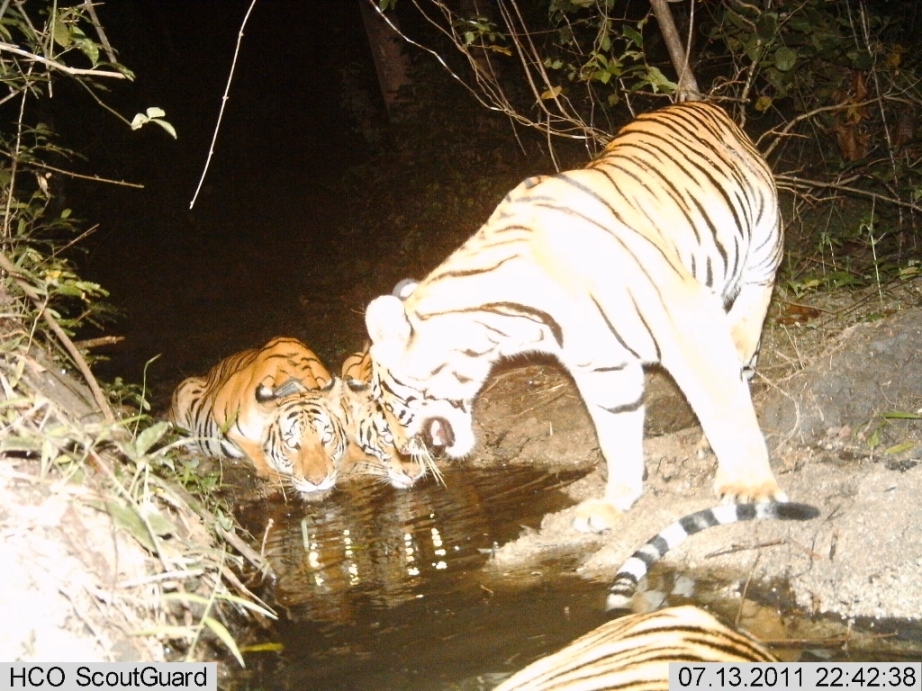Rare Wildlife Caught By Camera Traps in Thailand


Camera trap video footage filmed in the forests of Thailand confirms that anti-poaching work there is paying off, according to the Wildlife Conservation Society.
The footage — taken by camera traps from several locations across Thailand's Western Forest Complex over the last year — shows rare glimpses of tigers, Asian elephants, gaurs, sun bears and many other species. Highlights include a tigress and her cubs feeding on an animal carcass, leopards marking their territory with scent, wild pigs nursing their young and Asian elephants mating.
"The video represents a huge payoff for the government of Thailand, which has invested considerable resources in protecting wildlife and preventing illegal hunters from plundering the country's natural heritage," said Joe Walston, director of the Wildlife Conservation Society's Asia Program.
The camera trap footage shows that populations of tigers and their prey have stabilized in the large core area of the Western Forest Complex. This core spans 7,000 square miles (18,000 square kilometers), an area larger than Connecticut. The region is home to 125 to 175 tigers, according to recent estimates. The complex also contains one of the largest elephant populations in Southeast Asia.
The footage also captured rare and elusive species such as clouded leopards and banteng (a wild cattle species). [See camera trap images.]
Every year, the Wildlife Conservation Society works with the Thai government to train and equip several hundred park rangers that patrol and protect the region's wildlife and capture poachers.
Earlier this year, those park rangers captured poachers possessing a cellphone that contained images of a dead tiger. The poachers insisted the tiger was killed in another country, but the camera trap's identification software and records proved that the tiger was from Thailand's forests. The evidence was used to refute the false testimony and arrest the poachers.
Get the world’s most fascinating discoveries delivered straight to your inbox.
Thailand serves as a training ground for guards from other Asian countries seeking to protect their own resources. The Wildlife Conservation Society collaborates with the Thailand government to train enforcement staff from China, Nepal, India, Myanmar, Bhutan, Cambodia, Laos, Malaysia and Indonesia.
- Video: Rare Wildlife Caught By Camera Traps In Thailand
- Camera Trapped: Wonderful and Weird Wildlife Around the World
- 10 Species Success Stories
Follow OurAmazingPlanet for the latest in Earth science and exploration news on Twitter @OAPlanet and on Facebook.



